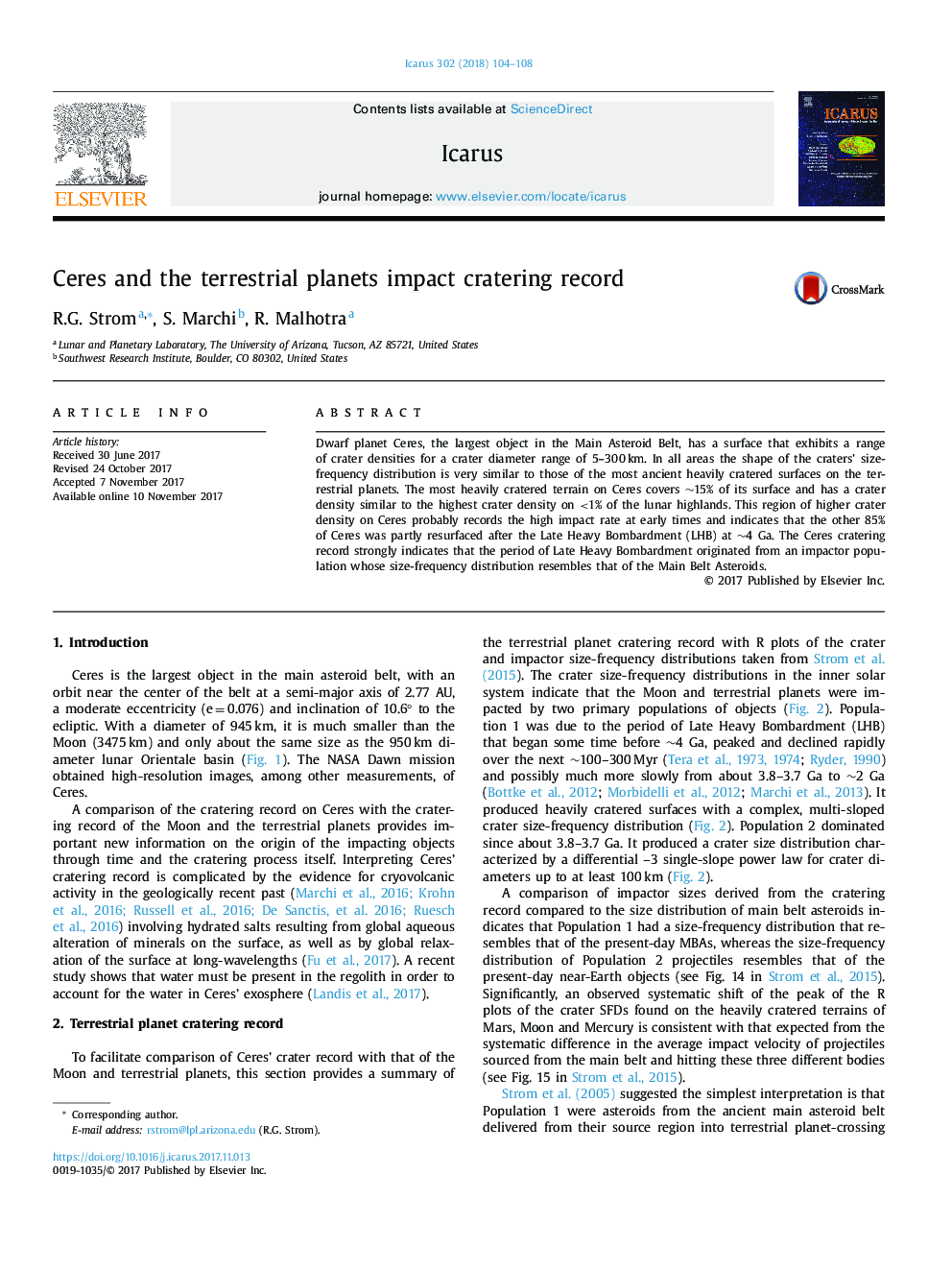| Article ID | Journal | Published Year | Pages | File Type |
|---|---|---|---|---|
| 8134509 | Icarus | 2018 | 5 Pages |
Abstract
Dwarf planet Ceres, the largest object in the Main Asteroid Belt, has a surface that exhibits a range of crater densities for a crater diameter range of 5-300â¯km. In all areas the shape of the craters' size-frequency distribution is very similar to those of the most ancient heavily cratered surfaces on the terrestrial planets. The most heavily cratered terrain on Ceres covers â¼15% of its surface and has a crater density similar to the highest crater density on <1% of the lunar highlands. This region of higher crater density on Ceres probably records the high impact rate at early times and indicates that the other 85% of Ceres was partly resurfaced after the Late Heavy Bombardment (LHB) at â¼4 Ga. The Ceres cratering record strongly indicates that the period of Late Heavy Bombardment originated from an impactor population whose size-frequency distribution resembles that of the Main Belt Asteroids.
Related Topics
Physical Sciences and Engineering
Earth and Planetary Sciences
Space and Planetary Science
Authors
R.G. Strom, S. Marchi, R. Malhotra,
